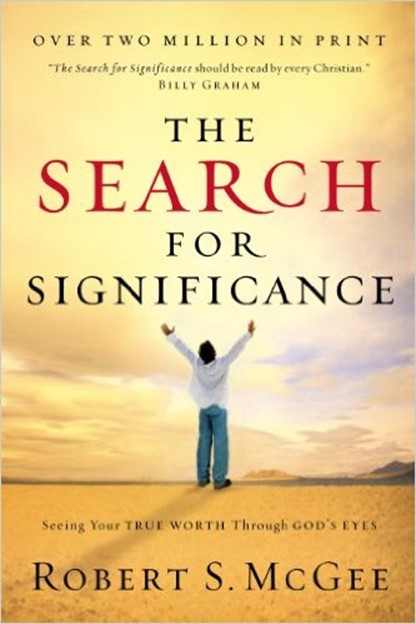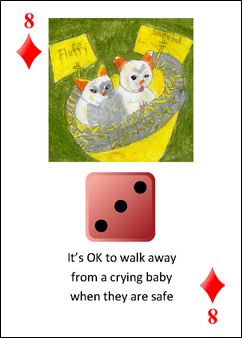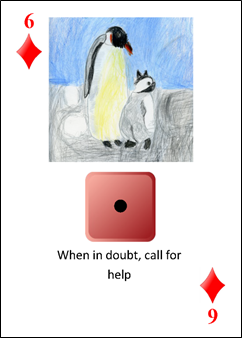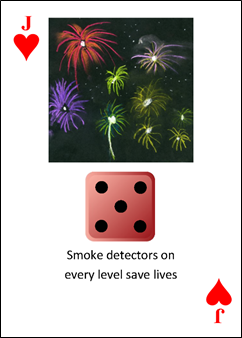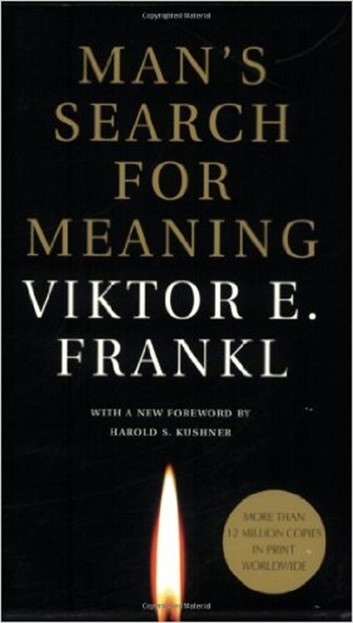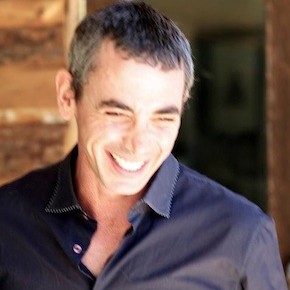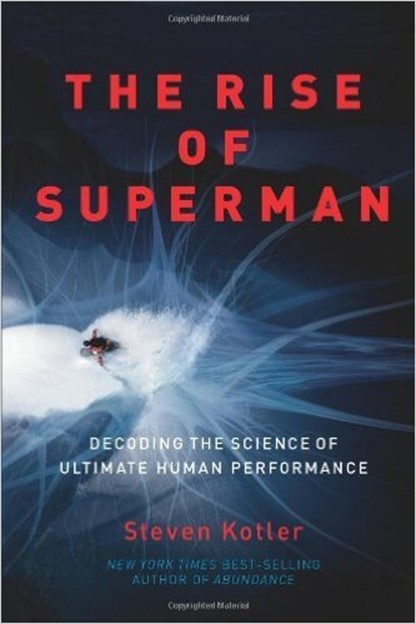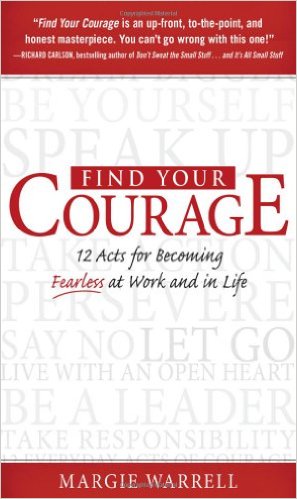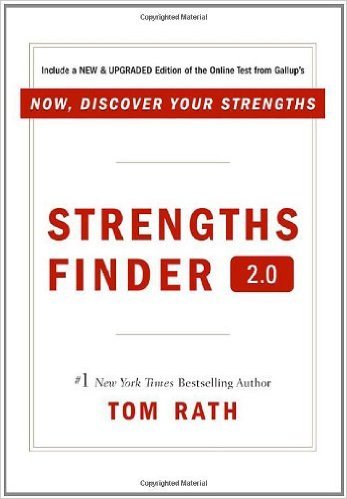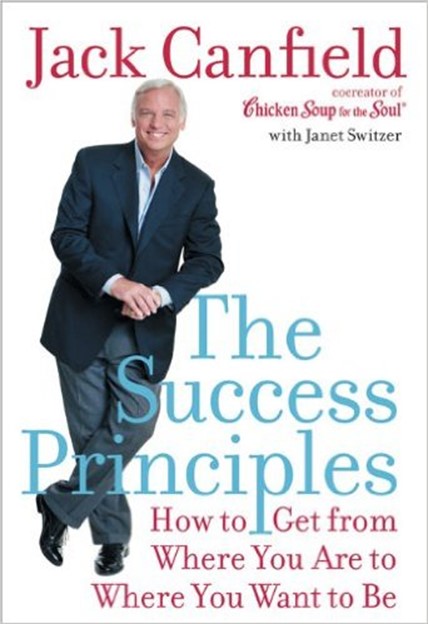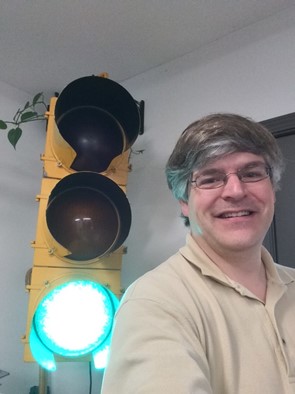Robert Bogue
October 5, 2015
No Comments
Ultimate human performance, peak performance, optimal performance, and other terms have been used to describe people operating at the limits of what we are capable of doing. Research and broken records have demonstrated that our long standing beliefs about the limits of the human body are incorrect and are limiting. In The Rise of Superman Steven Kotler takes us on a walk through action-adventure sports to see how athletes are able to transcend previously believed limits and perform amazing feats never before possible. The road to these super human feats isn’t evolution, the road is a mental state called flow.
What we believe are our limits aren’t really our limits. Most perceived limits are only the capacity that we’re able to access. Vladimir Zatsiorsky, a kinesiologist at Penn State says that the average person can access about 65% of their real total strength. Trained athletes can access perhaps 80% of the real biological limits of their strength. If in strength we can only access 80% of our capacity, then how much of our other capacities do we use? What we learn from flow and The Rise of Superman is that what we believed were limits may just be speedbumps.
What is Flow?
Flow has been known for centuries by multiple names but its current name – flow – was provided by Mihaly Csikszentmihalyi. I’ve written about his work before in my review of Finding Flow. Flow is an operating state of peak performance where things just seem to flow together. Flow is the balance of challenge and skill and in this state many things become less important. People fail to eat, sleep, or take care of other bodily needs. Time seems to flow rapidly at times – and to nearly stop at others. Time has no hold on flow.
Flow is an intrinsic motivational state. That is once in flow you want to maintain flow because flow is its own reward. Daniel Pink in Drive makes a compelling case for motivation with autonomy, mastery, and purpose. This motivational strategy is a better strategy than traditional “carrots and sticks” motivation when we need to be creative – when we need to transcend existing boundaries. Richard Florida of Carnegie Mellon University is quoted in Theory U as saying that today is “the rise of the creative class.” He estimates that 30% of all employed people belong to this new class. As the percentage of creative, heuristic workers grows, flow provides one important intrinsic motivation to drive growth and performance.
Most of us have experienced flow in our lives – and most remember it well enough to want to be back there. We want to recreate the conditions where our fears and failures faded away as we became hyper productive and intimately involved with what we’re doing. Some people spend much of their lives seeking out the illusive state of flow. Kotler believes that he’s found some of the triggers that can be used to get us back into flow.
Triggers
Csikszentmihalyi described three conditions for flow: Clear goals, immediate feedback and challenge/skills ratio. Kotler calls these three conditions triggers and adds an additional eight triggers in two additional categories:
I disagree with this Kotler in calling this list triggers. I believe that Csikszentmihalyi’s initial three are conditions – that is they are requirements to be met before one can enter a flow state where I believe that the eight additional items that Kotler provides may be catalysts, I don’t believe they’re conditions or prerequisites.
Clear goals is the first of Csikszentmihalyi’s conditions. This means you have to know the outcome you want to achieve. Whether that’s an article or a book, or a program – clear goals means simply that you have an end in mind. This aligns with the motivational research around autonomy mentioned in Drive. When I’m writing code the goal is often crystal clear with the path to take being not so clear. When I’m writing an article, I often find that I’m not fixed on the endpoint. I know that I want to convey a message but often during the processing of the writing the endpoint changes. The goal in this case is simply to share my experience with other humans and that is clear enough for me.
Immediate feedback is the second condition. In this case the definition of immediate is relative. For the developer the “immediate” feedback might require a recompile and a test run of the data. This is different than a skier who immediately receives feedback from the environment as he’s skiing. Developers often process immediate feedback through the development of their mental models about how the computer will process the instructions. Gary Klein in Sources of Power explained how deeply mental models are embedded into the way we work and the way we make decisions. Sometimes immediate feedback is feedback generated by the mental model that we have developed.
The challenge to skills ratio is Csikszentmihalyi’s final condition and it follows the same pattern of being defined relative to the individual experiencing flow. Certainly the gap between the challenge and the individual’s belief of their skills is essential – however, it’s really about the belief of the person in their skills. If the challenge is perceived to be too great then it will never be attempted. If it’s too little then it will be boring. Getting and keeping the ratio right is what keeps us in flow. If we ever decide the challenge is too great we’ll break out of flow – until we can change the perception of our skills or the perception of the challenge. Similarly if the amount of challenge remains too low for too long we’ll fall out of flow as we’ve no longer got the challenge to sustain the flow state.
Kotler’s additional eight triggers don’t fit these essential conditions. While high consequences will encourage flow state to begin there are many flow states that people enter while writing, developing code, creating art, etc., that don’t require high consequences. They don’t require a rich environment – in fact for a developer a rich environment might inhibit flow because it drives a higher than acceptable perception of challenge. So from my point of view, while the eight additional are triggers – they’re not exactly like Csikszentmihalyi’s original three.
However, many people have found these triggers as gateways into flow. When you’re chasing the impacts of flow, sometimes anything that will point you in the right direction is valuable.
The Impact of Flow
Flow is an immensely productive state. It has surfaced in numerous places in my reading and in general research. Peopleware was the first place I encountered the concept of flow – even though I didn’t include mention of it in my review. Flow and the need for flow has been woven through the writing on best practices for software developers for years. The first edition of Peopleware, for instance, was published in 1987.
McKinsey researched executives that regularly experienced flow and determined they were five times as effective as their non-flow peers. James Slavet of Greylock venture capital called “flow state percentage” – defined as the amount of time employees spend in flow – the “most important management metric for building great innovation teams”
While the state of flow is meaningful enough in and of itself to be desirable the residue – what is left when you’re done with flow – is perhaps more important. The research points to the fact that those who experience flow report greater creativity long after being in flow. Those who have a high amount of flow in their lives tend to be happier than people who don’t experience a large percentage of flow time. Perhaps flow is the answer to happiness that both Daniel Gilbert in Stumbling on Happiness and Johnathan Haidt in The Happiness Hypothesis were looking for. Maybe it’s a happy place that we can use to escape the world.
Flow as an Escape
It’s no secret that everyone has places where they’re broken. As I mentioned in my review of Chasing the Scream, many of the issues that we see as addiction are really pains bubbling up from inside of the person – getting expressed as an addiction. In truth addicts, whether they’re of the workaholic variety, the alcoholic variety, or illicit drug variety are in their hearts are silencing their inner voices and soothing their pain. They can make the voices and the pain go away for a while. The athletes Kotler interviewed admitted that in the state of Flow they could stop the “ghosts” from following them. “The edge (flow) is the one place that the ghosts can’t follow.” And so on one level the moniker of adrenaline junkie fits. The athletes get hooked not on the adrenaline but on the flow. As Kotler points out most of the so called adrenaline junkies hate the adrenaline but love the flow and will chase it.
Adrenaline is nasty stuff. While it might be necessary for a fight-or-flight world where you might get chased by a lion. In the world we live in today it makes people jumpy. It narrows our focus to whatever the perceived threat is. The impact is more than psychological, it’s physiological – it reduces the body’s immune response (As was discussed in Emotional Intelligence.) This makes sense because the body is primed for a fight that it may or may not win. Why spend energy on long term survival activities when short-term survival is at stake.
Adrenaline then is used to narrow our focus to only those immediate and pressing needs of the moment and yet flow is an expansive state where we’re able to consider many possibilities and where our lateral thinking is dramatically expanded. We’re able to come up with creative solutions to problems. How do we get from narrowed focus to broadened focus? The answer may be in the cycle of flow.
Flow Cycle
Before The Rise of Superman I knew what flow was and I routinely entered it – however, I didn’t have language to describe the entire cycle that I’d go through. The flow cycle starts, as Kotler explains, with struggle. This is the place where you’re facing the challenges and are gearing up for them. Like an airplane that’s struggling to break the speed of sound — things shake. Figuratively the ground rumbles. This state can only be maintained for so long. In the case of the aircraft analogy you’ve either got to get faster than the speed of sound – or not. You can’t stay in this state forever.
The next stage is the release cycle. This is where the struggle still exists but you’re not consumed by it or frustrated by it. Often this is accompanied by a diversion of a walk, another project, or another activity. You need this stage so that your body can get primed to be able to enter flow. You need the relaxation to allow the next stage to happen.
The third and next stage is flow itself which we’ve described extensively here. It’s a wash of neurochemicals and transient hypofrontality that shuts down parts of the frontal lobe. It’s what the adrenaline junkies live for. It’s an extremely productive state – and an extremely expensive state for the body to maintain.
The fourth and final stage is recovery. In this stage you’re coming down from the state of flow and your body is starting the process of recovering from the expenditures of flow. It feels like an unproductive time – but it’s a necessary one.
However, the end result – after recovery – are happier lives. In study after study, those who routinely experience flow are not just more productive. They’re happier and that happiness can last for a long time after the flow state. Csikszentmihalyi’s Finding Flow quoted “You could say that I worked every minute of my life, or you could say with equal justice that I never worked a day.” That’s the power of flow. You don’t feel like it is work and that positive feeling sticks with you.
From Narrow to Broad Focus
It’s the struggle phase of the flow cycle where we get our rush of adrenaline. It’s that stage where we get the energy to kick start the cycle but whereas a natural consequence of the adrenaline our focus narrows. In fact, stress of any kind is known to narrow our focus. It’s one of the reasons, as was thoroughly explained in Drive, we can’t always assume that providing incentives will result in better performance.
It’s the release stage that transfers our focus from the narrow to the broad. A wash of nitric oxide is a part of the parasympathetic response that happens when we relax. (For more on the parasympathetic system see The Science of Trust, Hardwiring Happiness, and Emotional Intelligence.) Nitric Oxide is a rapidly released and used neurochemical transmitter which explains why peace can “wash over us.”
With nitric oxide in our system we’ve got the chemical cocktail we need to enter flow. We’ve got adrenaline which has a long half-life (20 minutes or more) providing us with energy for the process and focusing the body’s efforts. As a result it’s possible to shut down parts of the brain resulting in transient hypofrontality. That is parts of our executive function are quite literally shut down.
This is the same kind of energy exchange that adrenaline is known for. Digestion and immune responses are suppressed in order to improve our available energy for fighting or running. Nitric oxide is the rapid response unit for the parasympathetic nervous system signaling that all is well. So with parts of our executive function suppressed we enter a relaxed state. It is this relaxed state that allows us to dramatically broaden our focus and improve lateral thinking.
So we start the cycle of flow by narrowing our focus with struggle and adrenaline. When we’re able to relax we’ve activated the parasympathetic nervous system and we’ve layered nitric oxide on top of the adrenaline and thereby have created a situation where parts of our brain have additional energy available and other areas of our brain – like the area for our inner critic – are shut down.
My Flow Cycle
I’ve chased flow less aggressively than the action-adventure athletes in The Rise of Superman, but I’ve chased it none-the-less. Before I even started my career I was writing computer programs and I can remember the stages. Struggling to design a structure to solve the problem, the release of designing an approach that seems to work, and the flow of banging out the code to build it. The end was mindless watching the compiler compile the code and fixing the inevitable typos and small logic errors.
In writing I saw the same struggle. I’d start dropping concepts on the page. I’d try to order them. I’d struggle with it until a textual flow seemed to emerge. I’d relax and get about the real task of writing. Afterwards I’d shutdown briefly before writing again – I needed time to get ready for the next iteration.
In editing I’d see the cycle too – but it would be different. I’d struggle to get control of my environment to start the process of blocking things out. I’d get into a groove, I’d relax, and enter flow. I can vividly remember a conversation with my girlfriend at the time about how long it took me to respond to her. She asked me a question and according to her it was a full five minutes before I acknowledged or responded to her. Obviously she was patient – but it demonstrated to me that I really did completely lose track of time not just in the long term but in the short term as well.
I still experience flow in these situations but now the most interesting entry into flow is speaking. While Seinfeld may believe that most people at a funeral would rather be in the casket than delivering the eulogy, I love it. While not an extrovert at my core, I enjoy being able to share with so many so quickly. For a typical keynote (or big speech) I’ll get the adrenaline rush. It’s sort of a twitchy feeling where you feel like you want to crawl out of your own skin. Next is me doing self-quieting exercises which candidly are best done with music. When I step on stage and start speaking I rarely think about what I’m saying. I’m completely engrossed in watching the cues from the audience and looking to keep things loving. In a recent keynote at SPTechCon I was told that I pulled out many “voices” and used them during the talk. The voices are impersonations or characterizations of ethnic groups. I had planned one into the talk – an Irish voice. However, apparently several more made it into the talk. I wasn’t aware of it until I was told later.
Equally interesting is that coming off stage from an event like this I’ve got maybe 20 minutes before I need time to shut down and be alone. I need to just sit in quiet or near quiet allowing everything to quiet down and for my energy levels to return. That’s my recovery. It’s my time to reintegrate into the real world where time has meaning again.
My Flow Kickstart
While action-adventure athletes leverage one of Kotler’s triggers to get flow started, for me I’ve found another way. A way that didn’t make sense until I understood the cycle. I start with a bit of biofeedback where I trick my body into a stress response – goosebumps and a higher heart rate. This is a trick I learned a long time ago when I was in bed at the hospital with a kidney infection. I couldn’t really do anything so I started playing with what I could get my body to do.
The next step for me is to play music loud. This causes me to relax and drift into the music. I realize that loud music seems hard to ignore but because it’s familiar patterns I can start to block it out. In that process is the relaxation. It’s soothing to me like the sound of waves crashing on the rocks. The resulting release frequently lands me into flow. I say frequently because there are times when I can’t quite get the sequence right and I continue to struggle with a problem rather than experience flow – but it’s effective for me more than 90% of the time.
Interestingly I don’t seek flow every day or even every week. I will only attempt the kick start when I know that the challenge/skill ratio is right and that I can get the time I need to stay in flow long enough. Very few things are more frustrating for me than having gotten into flow only to be interrupted. I hate losing the feeling.
Wiring and Rewiring
If you can remember when you were first learning to drive you’ll remember the amount of focus it required to drive. It was an all-consuming activity. It required your complete focus to ensure that you didn’t violate a rule or injure persons or property. However, if you’ve been driving for a while you are likely to barely remember how you got from one place to another. Generally the process of driving has been wired into our brains so that we don’t require conscious attention to do it.
Daniel Kahnman in Thinking, Fast and Slow speaks of our two brain systems. System 1 is the automatic system, the one that does its work subconsciously. System 2 is our executive function and the result of our concentration. System 2 can always be fooled by System 1 because System 1 is the one that holds all the data. However, System 2 is the one that programs system 1 – there by leading to a circular causality of how we process information.
Gary Klein in Sources of Power spoke about how fire captains couldn’t explain how they knew the right approach to take to a fire. There wasn’t rational decision making taking place. Instead there was what he called recognition primed decisions where experience had created mental models of the ways that fires worked. The fire captains would simulate the fire with these models and decide the best course of action.
In this way the fire captain’s novel experiences activated system 2 – where they had to think about how to solve the problem. Ultimately the results would be encoded in such a way that it was accessible to System 1 so that future executive function wasn’t required.
So it is that we wire our automatic responses through our world. We see something and it becomes a part of our experience and therefore the default responses that system 1 will use. “When the brain finds a task it needs to solve,” writes Baylor neuroscientist David Eagleman, “it rewires its own circuitry until it can accomplish this task with maximum efficiency.”
The key in rewiring our brains for optimal processing of any situation is creating the experiences necessary to rewire the brain. Kotler quotes Malcom Gladwell from his book Outliers about needing 10,000 hours of practice to become the best. He further challenges the idea that the 10,000 hours has to be deliberate practice failing to see how Shane McConkey’s practice of deliberate quoting him as saying “What I love to do on the hill is find an interesting way to do something fun.” I, on the other hand, take little issue with this. Hidden in Shane’s goal is an unstated one – to become better at what he’s doing so that he can have even more fun.
Anytime that you’re enjoying what you do and are interested in becoming better, you’ve got the opportunity to convert practice (or experience) into mastery. We are, as Carol Dweck says in Mindset, able to change ourselves. If we’re willing to feed ourselves with the right experiences and the right mindset we can wire our brains – or even rewire them. Perhaps it’s in our ability to rewire that we think that we develop a creativity for our world.
Creativity Time
IBM surveyed 1,500 top executives in sixty countries and determined that the most desirable quality of the CEO was creativity. When Partnership for 21st Century Skills – a collection of 250 researchers – looked for the most critical skill that our children need to thrive in the future creativity was the top answer. Creativity is key whether you’re a captain of industry, a craftsman creating something new, or a child trying to survive in a complex and changing world.
However, creating creativity is a challenge. In Creative Confidence we learned about how we’re held back from creativity by voices and expectations. While Creative Confidence gave some tools for becoming more creative and described the barriers, it didn’t create creativity. However, it’s possible that introducing more flow into people’s lives can do this.
Flow introduces a state of transient hypofrontality – reduced executive function. In the process flow shuts down our inner critic. Flow removes the barriers to creativity while also improving lateral thinking. As a result, creativity is boosted.
Equally interesting for me was the research from David Eagleman who found that our sense of time isn’t centralized in one part of the brain but rather is a coordinated activity with many different parts of the brain working together. Why is that interesting? Well, the Myers-Briggs Type Indicator includes a Judging-Perceiving dimension that I oversimplify to a definite sense of time. Judging people are on-time. Perceiving people prioritize people and things above time. They’ll lose time in order to connect with people.
If time is an activity that is not centralized then those people who have a strong sense of time have a brain whose natural state is to be communicating across the different regions. Shouldn’t these people be more prone to creativity than their perceiving colleagues? If creativity leans it’s ladder on the wall of lateral thinking, shouldn’t those whose brains are literally wired to connect different regions have an advantage?
Looking Inside the Brain – Electricity
In the desire to understand how we think and how flow works there have been a number of tools that people have used to see what’s happening. One effective way is to watch brain waves with something called an Electroencephalograph or EEG. This relies on a set of sensors placed around the brain which detect the electrical impulses of the brain and record the waves that this electrical activity makes. Here’s a quick listing of the kinds of waves that an EEG finds:
- Delta – Between 1hz and 3.9hz – An indication of a deep dreamless sleep
- Theta – Between 4 hz and 7.9 hz – Present in REM sleep, meditation, and during the processing of novel stimuli.
- Alpha – Between 8hz and 13.9 hz – The brain’s basic resting state
- Beta – Between 14 and 30 hz – Learning and concentration (low end) or fear and stress (high end)
- Gamma – Above 30 hz- Present when different parts of the brain are coordinating and binding disparate thoughts
What researchers found is that decision making requires a six-stage cycle involving different brain waves and patterns. One of the characteristics discovered for flow was that people in flow could move fluidly between the stages – they don’t get caught up in any of the stages.
Looking Inside the Brain – Chemistry
However, the brain isn’t an electrical engine. Our brain is an electro-chemical engine. We work as much by our chemistry as our electrical forms so what’s the neurochemistry behind flow? Well, here are the actors:
- Epinephrine – The kick start into the process is adrenaline or more specifically epinephrine. It powers the system up for the fight-or-flight reaction.
- Dopamine – Engagement, excitement, and creativity are the way that dopamine shows up on the scene.
- Norepinephrine – Signals the body to speed the heart rate, trigger a glucagon response from the liver to release energy, and increases respiration the net effect of which is to make energy available in the bloodstream.
- Endorphins – Relieves pain and increases pleasure. When your brain wants to reward behavior – like sex – this is the first choice.
- Anandamide – Bliss like the effects of marijuana come from this neurochemical
- Serotonin – A mood stabilizer which forms the basis of most anti-depressants which are called selective serotonin reuptake inhibitors (SSRIs)
With the exception of Serotonin all of these neurochemicals are present in flow. Effectively there’s a massive amount of energy in the system through epinephrine and norepinephrine which is harnessed by converting the energy into engagement and creating a positive and blissful state which sets us up for the ability to make decisions without the impact of our inner critic or the focusing effects of stress.
Serotonin which appears on the back end keeps us from falling into a deep hole of depression because of the exhaustion of the other neurochemicals. It’s the mood stabilizer that eases the pain of coming off the high.
Flow as it turns out is always a good trip – unlike some illicit drugs. So at some level chasing flow is much safer than the use of other escapes that we use to cover our pains. However, certainly in the action-adventure sports arena flow has claimed many lives. Living on the edge of human performance it turns out is dangerous business.
Group Flow
When working as an audio engineer for churches I’ve been able to see what group flow looks like. Most of the time when you’re working with a band they’ll be playing the same tune at the same tempo in the same key but they’re not really totally together. There are tricks that we can use to help them stay in time. We can put more bass drum in the monitors so that they get a more precise set of time. We can provide the drummer more of the click track if they tend to drift their timing.
We can even help musicians know when they’re being too aggressive with their instrument. If you have a musician who is pounding the ivory off the top of the keys you can feed them more of the piano to get them to subtly and instinctively reduce the amount they’re pounding on the keys. Similarly if they’re playing too tentatively, you can drop the amount of their own instrument. It’s all subtle and with the goal of helping everyone “get into the groove.”
When that happens, the results are amazing. They don’t need the cues. They’re no longer focused on their own playing. The mechanics of their instrument aren’t being considered. Instead they’re thinking of how the music fits together. They’re not having to hear the bass drum to know where the tempo is. They can feel it.
I have to sit on the periphery of these experiences. I get to help be a catalyst to support the experience but in reality I have very little impact on getting it all together. While I can support getting the band into flow – I don’t in anyway cause it. I do, however, get to see how amazing it feels when it fits together.
There are two distinct things that we’re discussing when we talk about group flow. The first is the situation like the one above where multiple people are entering flow together and are doing something collectively. This is a difficult state to achieve but one that’s powerful.
The second thing that we lump into group flow is the amplification effect of being in a group of like-minded people who are looking to improve their game in the same way that you are. This is where communities of flow junkies are gathered together to feed and support each other in their desires. Whether it’s staying year round at Yosemite at Camp 4 or entrepreneurial incubation centers that are springing up around the country. By creating population density you can amplify the effects of a group of people.
However, the amplification relies upon two things. First, everyone must be encouraging. They’re collaborators on the goal of raising everyone’s level. Richard Hackman in Collaborative Intelligence speaks about how teams should and shouldn’t behave. Though not everyone is employed by a common organization, they should be bound together in a cooperative that makes them a team.
The second factor is that they should be focused on “Yes, and…” Shortly after I took the standup comedy course, I took an improvisation course with Michael Malone. Michael is gifted. He owns a stage unlike any other comedian I’ve ever seen. During our training Michael helped us to understand the rule of “Yes and” in improvisation. When doing a scene you don’t respond with “No it didn’t” – instead you respond with “Yes and…” Improvisation – like life – is about bigger, weirder, and stranger. By responding with “Yes and…” you can move the story line forward instead of freezing it.
If someone says there’s an elephant in the living room the response is and it’s wearing a tutu. This is the kind of amplification effect that drives an entire group of people forward. This is group flow of a different kind. It’s a group of folks entering their own individual flow more frequently with more productive results.
Flow Requires Action
Kotler insists that flow requires action. It’s not about dry research. It’s about doing something. I agree. Whether the action is small or large you have to do something. Maybe you should reach out and grab The Rise of Superman so you can start finding your way to flow more often.
